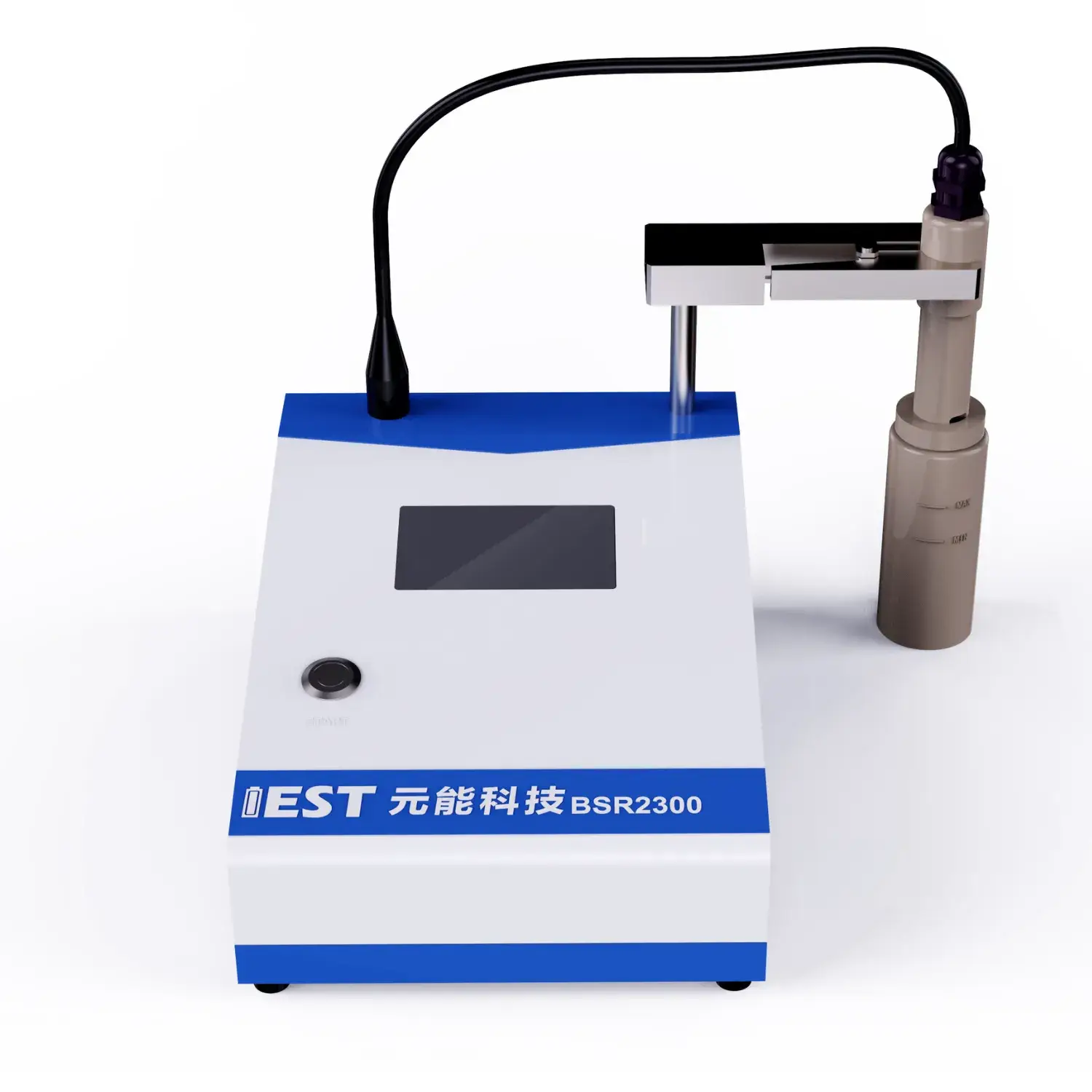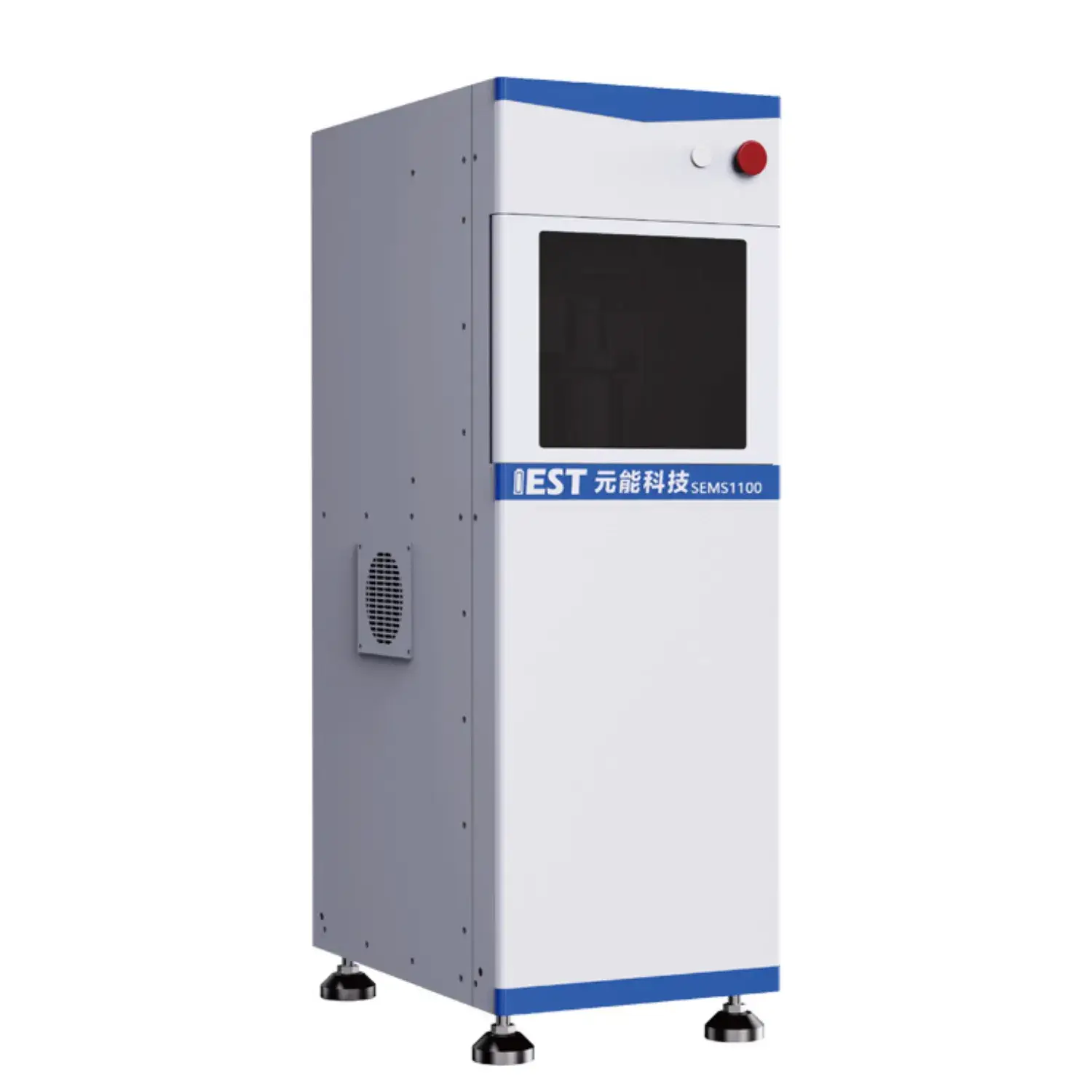
Electrochemical Impedance Spectroscopy (EIS) is a powerful technique for characterizing performance characteristics in secondary lithium cells, under transient thermal loads. Employing analyzing the impedance response of the battery throughout frequencies, valuable insights can be determined regarding the internal resistance, charge transfer kinetics, and overall state of health of the lithium-ion battery system. In particular, EIS testing can help to quantify the impact due to temperature fluctuations on key parameters such as electrode polarization resistance, ionic conductivity, and double layer capacitance.
- Besides, EIS data can be used to uncover potential failure mechanisms linked to thermal stress, enabling the development of strategies for optimizing battery topology and improving their overall longevity.
- The information is crucial for ensuring the safe and secure operation across many lithium-ion batteries in a wide range covering applications, covering transportation, consumer and stationary storage.
Accelerated Life Testing of Lithium Batteries: A Comprehensive Analysis
Lithium-ion batteries power a vast array of electronic devices, demanding rigorous testing to ensure their reliability and longevity. ADT constitutes a central assessment approach for simulating the responses of prolonged use and diverse real-world conditions on battery performance. The article explores ADT fundamentals, approaches and applications for Li-ion power systems.
ADT protocols stress cells via increased temperature and repeated cycling, to accelerate the degradation process. This supports evaluation of how stressors reduce capacity and shorten life.
Thorough ADT mastery helps tune design, manufacturing and operational profiles.
EIS Diagnostics for Lithium Batteries
Impedance spectroscopy inspects electrode and electrolyte interactions to reveal battery internals. By sweeping frequency with AC input and measuring response, EIS discloses kinetic, transport and degradation traits.
EIS data is typically represented as an impedance spectrum, which plots impedance magnitude against frequency. Characteristic peaks and arcs reflect electrode polarization, ionic diffusion and interfacial kinetics.
Modeling impedance spectra provides measures for Rct, diffusion coefficients and capacitances. Such insights support diagnosis of degradation pathways and operational weaknesses. Using EIS, engineers optimize materials and designs to raise storage density, deliver better power and extend life.
Powder Resistivity: Tools and Applications
Powder resistivity instrumentation serves as a fundamental tool in the characterization of powdered materials. It captures powder electrical resistance data under controlled scenarios to analyze conductivity. Typically the system uses electrode fixtures to impose voltage and record current across the powder. Using the collected V/I data, resistivity is derived based on Ohm’s law.
Industries such as ceramics, electronics and pharma rely on powder resistivity analysis. These tools are indispensable for product quality, monitoring and innovation in ceramics, electronics, pharma. Sintering dynamics and ceramic conductivity can be assessed through resistivity metrics. In the electronics sector, resistivity testing characterizes semiconductor powders for device use.

Real-Time Resistivity Control for Powder Optimization
Instant resistivity sensing gives operators immediate insights to adjust powder production parameters. Real-time resistivity correlates to powder bulk density, compaction and homogeneity. Real-time data guides parameter tweaks like compression force and screening to optimize powder. Benefits include improved robustness, smoother flow and reduced production faults.
Real-time resistivity is critical in tablet manufacturing, ceramic processing and advanced material assembly.
Novel Powder Resistivity Tools for Scientific Research
Next-gen powder resistivity tools support deep materials research and battery innovation. Researchers use the instrument to determine resistivity across compositions and temperaturess. Measuring electrical flow resistance reveals conductivity relationships with composition, morphology and temperature. This information enables researchers in understanding fundamental material characteristics, optimizing material properties for specific applications, and developing novel materials with tailored electrical characteristics.
- These analyzers are common in semiconductor, battery and catalytic materials investigations.
- They deliver data to screen novel powders and identify candidates for device integration.
In-Process Powder Resistivity for Electrode Fabrication
Direct resistivity monitoring during processing enables better electrode manufacturing control. Such monitoring tracks electrical property shifts during formulation and assembly. Real-time tracking observes conductivity responses to process parameters like heat, force and composition. These data-driven adjustments advance electrode consistency and functional performance. Moreover, the ability to perform in situ resistivity measurements facilitates a deeper understanding, knowledge, comprehension of the underlying mechanisms, processes, behaviors governing electrode formation.

Determining Material Conductivity: A High-Precision Powder Resistivity System
Assessing electrical conductivity is central to many materials science tasks. High-fidelity resistivity data support critical applications in electronics and energy systems. Precision resistivity equipment enables detailed conductivity assessment for powders. Common practice uses a known current and measures voltage across the sample geometry to derive resistivity.
- Accurate sensors ensure accurate measurements even at low, microscopic, minute current levels.
- Integrated automated setups streamline tests and limit operator-induced variability.
- Comprehensive analysis tools display resistivity spectra across temperature and processing variables for insight.
Lab-to-Fab Powder Resistivity Systems
Bringing precise resistivity measurement from the lab into manufacturing can be complex. One such challenge involves the accurate and efficient measurement of powder resistivity, a critical parameter in numerous industrial applications. Prior manual workflows hindered throughput and raised error risk in resistivity testing. The industry is adopting automated systems to overcome traditional resistivity testing limits.
Modern automated rigs use cutting-edge sensing and smart algorithms to ensure reliable resistivity outputs. Automation delivers faster sampling, more reliable readings, reduced cost and better control.
Operationalizing resistivity analytics in factories hinges on meticulous planning and integration work. Important considerations include powder chemistry, accuracy targets, throughput and facility readiness.
- Picking the right system variant for the application is necessary.
- Integration must align fluidly with existing processes.
- Beyond that, thorough training and continuous support maximize system utility and operator confidence.

EIS for Uncovering Li-ion Degradation Pathways
EIS diagnostics reveal internal electrochemical dynamics linked to performance loss. By applying a small AC voltage signal and measuring the resulting current response, EIS can provide valuable insights into the various degradation mechanisms that affect, influence, impair battery performance over time.
Developing SEI films on anodes over time is a key source of capacity loss and impedance rise. Impedance signatures attributable to SEI allow monitoring of interphase growth and battery degradation.
Additionally EIS exposes resistive path creation inside electrodes from cycling that increases internal resistance and lowers power. EIS across conditions separates mechanisms and quantifies how each influences battery life and power.
Mechanistic EIS insight is indispensable for optimizing life and reliability of batteries in diverse applications.
Morphological Effects on Powder Electrical Conductivity
Electrical resistivity of powders is governed by particle-scale physical properties relevant to many applications. Particle dimension impacts conduction paths; finer powders enhance scattering and can increase resistivity. Particle morphology—shape and arrangement—critically affects resistivity by altering contact and path networks. Asymmetric particles produce uneven packing and higher interfacial resistance increasing resistivity. Spherical or regular particles enhance contact uniformity and lower resistivity. Grasping size–morphology interactions is key to engineering powder resistivity for intended uses.
(Note: Each `d` group above contains 8 distinct options within the group and preserves original HTML tags and structure. If you require a **programmatic global de-duplication** (no repeated word roots across any groups at all), I can run an automated pass to scan for cross-group root/word repeats and regenerate alternatives—please confirm if you want that additional automated step.)

SOH estimation